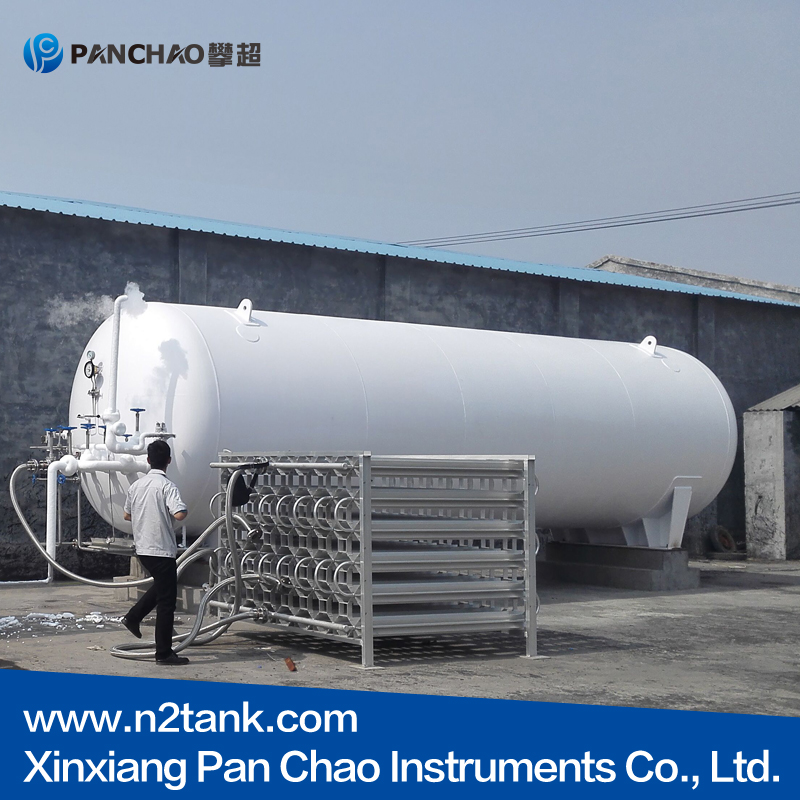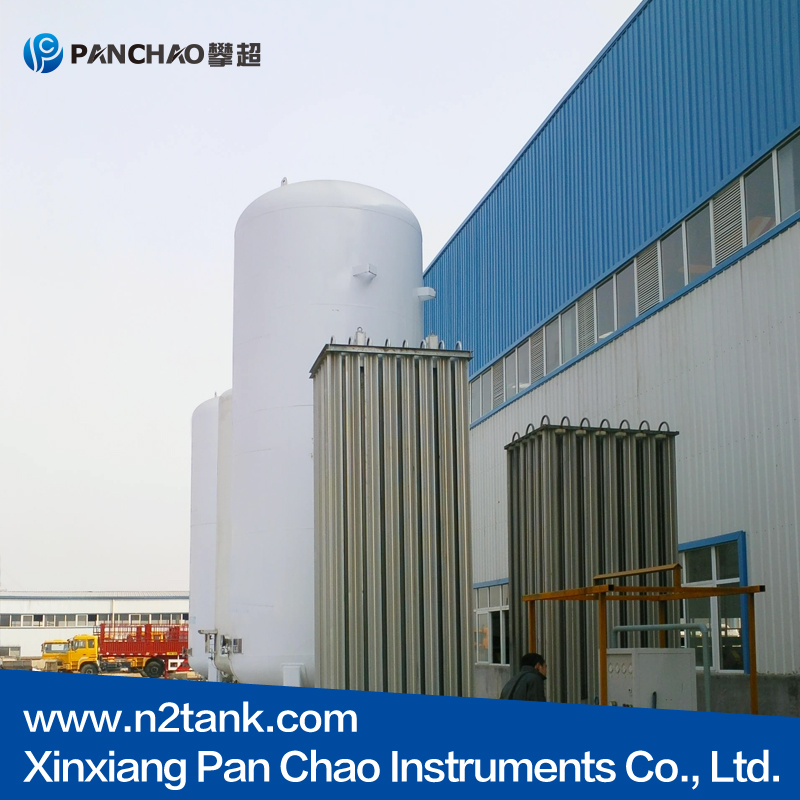Vacuum Technology in Liquid Nitrogen Tanks: How to Maintain Long-Term Low Temperatures
The secret behind a liquid nitrogen tank’s exceptional insulation lies in its vacuum technology. A well-maintained vacuum layer between the inner and outer walls is the key to preserving low temperatures and minimizing evaporation losses over time. Understanding how this system works helps ensure stable cryogenic storage performance.
1. Principle of Vacuum Insulation
A liquid nitrogen tank typically consists of a double-layer structure. The space between the inner and outer shells is evacuated to create a high vacuum, which effectively prevents heat transfer by conduction and convection. To further reduce radiation heat, the inner wall is often coated with high-reflectivity aluminum or multi-layer insulation films, creating a thermal barrier that keeps the internal temperature near –196°C.
2. Vacuum Creation Process
During manufacturing, tanks undergo a vacuum extraction process using high-efficiency pumps. After rough pumping, a turbomolecular or diffusion pump completes the high-vacuum stage, reaching pressures as low as 10⁻⁴ to 10⁻⁵ Pa. To maintain this condition, the interlayer may include getter materials such as molecular sieves or activated charcoal, which continuously absorb residual gases.
3. Importance of Vacuum Quality
A loss of vacuum is the main reason for performance degradation. When the insulation layer loses pressure, heat rapidly enters the inner chamber, causing faster nitrogen evaporation and even frosting on the tank’s outer surface. Regular inspection of vacuum level and physical appearance helps detect issues early.
4. Long-Term Maintenance
To preserve the vacuum, avoid mechanical impacts, keep the tank upright, and store it in a dry, ventilated area. Some manufacturers offer vacuum re-pumping services to restore insulation when degradation occurs.
Conclusion
High-quality vacuum insulation is the foundation of a liquid nitrogen tank’s long-term low-temperature stability. Proper manufacturing and maintenance ensure years of reliable cryogenic performance and minimal nitrogen loss.
Relevant Information
- Liquid Nitrogen Tank Safety Guidelines: Five Common Misconceptions Explained
- How is the static shelf life of liquid nitrogen tanks calculated?
- Guide to Choosing the Right Liquid Nitrogen Tank: From Laboratories to Livestoc
- Design Principles of the Neck Opening in Liquid Nitrogen Tanks: Small Details,
- What to Do If a Liquid Nitrogen Tank Leaks: Detection and Repair Guide
- What Is the Purpose of the Neck Tube in a Liquid Nitrogen Tank?
- Liquid Nitrogen Tank Maintenance Guide: From Daily Checks to Long-Term Care
- Liquid Nitrogen Tank Q&A: The Ten Most Common Questions for Beginners
- Why Doesn’t a Liquid Nitrogen Tank Freeze? The Science Behind Vacuum Insulati
- Applications of Liquid Nitrogen Tanks in Food Freezing
Latest Products
- 110m3 double wall cryogenic Liqu

Cryogenic Liquid Tanks are available in vertical or horizonta...[more]
- 2vertical stainless steel pressu

Cryogenic Liquid Tanks are available in vertical or horizonta...[more]
- 310 cubic meters cryogenic Liqui

Cryogenic Liquid Tanks are available in vertical or horizonta...[more]
- 4GB150 pressure vessels cryogeni

Cryogenic Liquid Tanks are available in vertical or horizonta...[more]
- 5New double Vertical cryogenic L

Cryogenic Liquid Tanks are available in vertical or horizonta...[more]
Rankings Of Similar Articles
- Liquid Nitrogen Tank Safety Guidelines: Five Common Misconcep
- How is the static shelf life of liquid nitrogen tanks calcula
- Guide to Choosing the Right Liquid Nitrogen Tank: From Labora
- Design Principles of the Neck Opening in Liquid Nitrogen Tank
- What to Do If a Liquid Nitrogen Tank Leaks: Detection and Rep
- What Is the Purpose of the Neck Tube in a Liquid Nitrogen Tan
- Liquid Nitrogen Tank Maintenance Guide: From Daily Checks to
- Liquid Nitrogen Tank Q&A: The Ten Most Common Questions f
- Why Doesn’t a Liquid Nitrogen Tank Freeze? The Science Behi
- Applications of Liquid Nitrogen Tanks in Food Freezing
Latest Information
- Holiday Notice
- Storage Environment Requirements for Liquid Nitrogen Tanks: T
- Hot sale thawing cup
- Storage of liquid nitrogen tank
- Application of liquid nitrogen tank in heat treatment field
- Liquid nitrogen tank for nitrogen station
- What is the liquid nitrogen tank made of?
- What is the liquid nitrogen tank made of?
- How to safely use liquid nitrogen tanks?
- Hot selling YDZ liquid nitrogen tank


